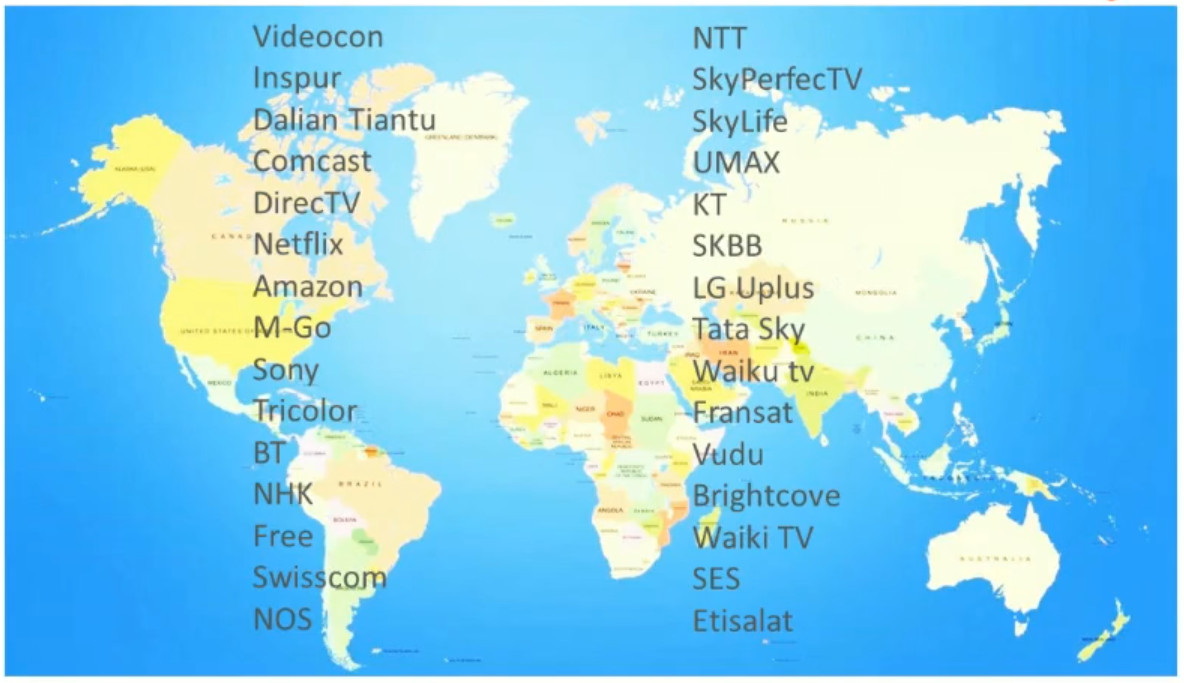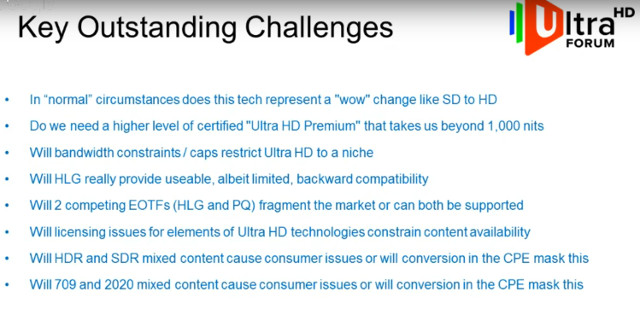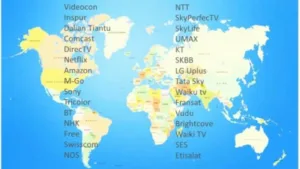That’s the conclusion of a recent webcast hosted by Broadband Technology Report that featured Mark Francisco from Comcast, David Price from the UHD Forum and Steve Christian from Verimatrix, a provider of a comprehensive range of revenue security solutions for pay-TV operators worldwide – and the webinar sponsor.
As Price explained, the UHD Forum was organized to help understand and work out how UHD content and content enhancement options like HDR, WCG, HFR and immersive audio will flow from camera to consumer devices. He noted that the UHD Alliance, who they are cooperating with, is focused on the content capture and display parts, but a group was needed to look at the most important middle section. Hence, the UHD Forum was organized.
Earlier this year, the group issued a report that helped to characterize the state of UHD and enhancements for the production workflow. It also provided guidelines on what they thought was feasible to roll out in 2016. Currently, the group is working on a similar report for rollouts for 2017, said Price.
Price noted that UHD deployments by service providers are increasing every month, as illustrated in the chart below.

But he said that how these will roll out in terms of enhancements is not clear and it will likely take another 12-18 months to provide a better picture on which enhancements these service providers are placing their bets on. Currently, the UHD Forum is also conducting a survey asking service providers how they view the value of each of these enhancements, in addition to the resolution upgrade to UHD. The results will be presented at IBC, but Price suggested that HDR is clearly a top favorite enhancement and there is clear interest in using this with HD signals.
UHD services are being introduced as Fremium or Premium services primarily. These are business decisions that service providers need to make to help justify the infrastructure cost for moving to UHD.
Francisco noted that most live content is captured with camera that acquire in 720p/60p or 1080/60i formats, so finding an HDR solution that works with this installed based and workflow is critical. Hybrid Log Gamma (HLG) seems to be the most likely candidate at this time and was recently endorsed by the ITU in BT.2100.
“Developing a good HDR workflow and efficiency compression schemes is the key to rolling out UHD and any enhancements,” said Francisco.
In 2014, Comcast rolled out it UHD sampler App which consists of UHD content from various sources. In 2015, it rolled out its first UHD capable set top box and is currently testing with employees the next generation STB, the Xi5, that will support HDR/WCG.
Francisco said that the rollout of UHD has “been relatively easy overall as they also moved to HEVC compression.” They worked closely with the UHD content providers to get a high-quality mezzanine file that could be efficiency compressed to about a 12 Mbps level with good yield. All the content so far has been 24 fps but they are now looking at some 60 fps content as well.
Comcast wants to find a solution that will allow capture in an HDR/WCG format that can then be used to create all the various deliverables in HD, SDR and HDR. “I am optimistic this can be done,” commented Francisco. “The pieces are coming together, including a switcher that can process 4K/60 content. We are also working closely with our sister organizations, NBC and Universal Pictures, to develop workflows that work for live and file-based content. Standards have been and will continue to be critical for success here.”
Price from the UHD Forum then showed a chart that describes what that organization sees as the 8 key challenges.

Each of these points is a whole topic area in itself, and he did not elaborate on.
Christian explained that Verimatrix has three pillars to its content security platform called Vcast-Ultra, which is embedded in the playback device. They combine hardware and software in the client device and consist of “hardware routing of the trust chain, the ability to protect execution of some critical code segments and management of keys, and the ability to use forensic watermarking on the display,” said Christian.
What is also different in these new UHD security models is their ability to adapt to new threats, which is something the HD models were not able to do well. -CC

